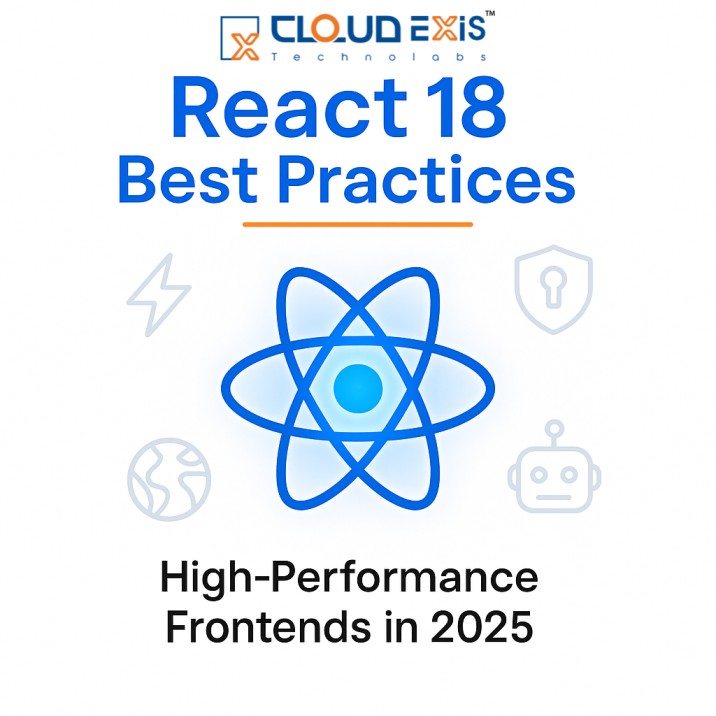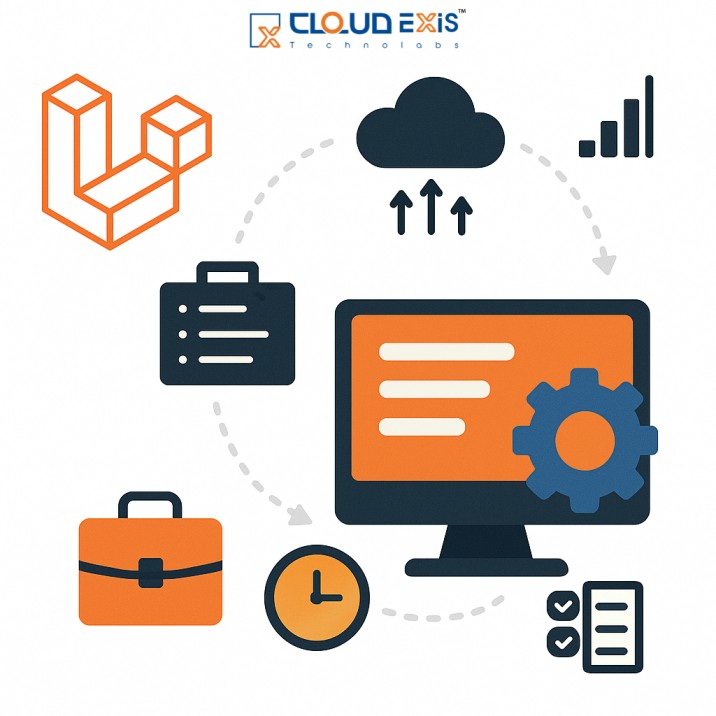React 18 Best Practices: Building High-Performance Frontends in 2025
In 2025, the digital landscape is faster, smarter, and more user-centric than ever before. Whether you’re building an enterprise-grade SaaS platform, a consumer-facing web app, or an AI-driven interactive experience, the frontend defines how people perceive and engage with your brand. That’s why React 18, the most widely used frontend library, continues to dominate in delivering high-performance frontends.
But simply using React isn’t enough anymore. The difference between a good app and a great one lies in how you leverage React development services and apply proven best practices. In this blog, we’ll dive deep into the latest strategies, coding standards, and architectural patterns that will keep your React frontend development future-ready.
Why React 18 Still Leads the Frontend Game in 2025
React has always been known for its component-based architecture, virtual DOM, and vibrant ecosystem. But with React 18, a new era began:
Concurrent Rendering: Enhances responsiveness by interrupting rendering work when higher priority tasks appear.
Suspense for Data Fetching: Offers smoother loading states and improved user experiences.
Server Components: Reduce bundle size by shifting logic to the server.
Automatic Batching: Reduces unnecessary re-renders by grouping state updates.
For businesses, this translates into faster load times, lower bounce rates, and higher engagement, making React the clear choice for frontend development services.
1. Adopt a Component-Driven Development Mindset
The foundation of React is its reusable components. In 2025, organizations that excel in React frontend development are those that treat components as building blocks for scalability and maintainability.
Best Practices
Atomic Design Principle: Break down UI into atoms (buttons, inputs), molecules (forms), organisms (sections), templates, and pages.
Storybook Integration: Document and preview components independently for consistency across teams.
Reusable Hooks: Extract logic like authentication, form handling, or API calls into reusable hooks (
useAuth,useForm).
Pro Tip: When outsourcing to a React development company, ask if they follow component-driven practices. It’s a hallmark of sustainable development.
2. Optimize Performance with Concurrent Features
React 18 introduced concurrent features that give users smoother experiences even in data-intensive apps.
Techniques
startTransitionAPI: Mark non-urgent updates as “transitions” so urgent interactions remain responsive.Suspense Boundaries: Add granular loading indicators for different parts of the UI.
Selective Hydration: With React 18 and Server Components, hydrate only what’s needed, reducing time to interactive.
Example: In a fintech app displaying thousands of transactions, concurrent rendering ensures scrolling and filtering remain snappy even while data loads.
3. Use Server Components to Minimize Client Work
In 2025, the push for lightweight frontends is stronger than ever. React Server Components (RSCs) allow developers to move heavy logic server-side.
Benefits
Smaller JavaScript bundles
Faster initial page load
Reduced client-side complexity
Pairing RSCs with frameworks like Next.js 14 gives businesses a competitive edge in performance and SEO, which is critical for scaling apps globally.
4. Ensure SEO and Accessibility Compliance
Frontend performance isn’t just about speed. it’s also about visibility and inclusivity. Search engines and accessibility tools now expect higher standards.
Checklist
Server-Side Rendering (SSR) with frameworks like Next.js for SEO-friendly pages
Semantic HTML to improve accessibility for screen readers
ARIA attributes and keyboard navigation for inclusivity
Lazy loading images & videos with placeholders for Core Web Vitals compliance
By partnering with React development services, companies ensure compliance without compromising design.
5. Code Splitting and Lazy Loading
Loading an entire app upfront is outdated. Instead, split code intelligently to improve perceived performance.
Dynamic Imports: Load routes, components, or utilities only when needed (
React.lazy).Bundle Analysis: Use Webpack Bundle Analyzer or Vite’s visualizer to find bloated modules.
Critical Path Rendering: Prioritize above-the-fold content first.
This technique is particularly vital for eCommerce, SaaS dashboards, and apps targeting mobile-first users.
6. State Management: Keep It Simple but Scalable
In 2025, state management is more nuanced than the old “Redux vs Context” debate.
Modern Approach
React Query / TanStack Query for server state (API caching, fetching, syncing).
Zustand or Recoil for client state (lightweight, minimal boilerplate).
Context API for global themes, authentication, and small datasets.
Golden Rule: Don’t over-engineer. Choose the right tool for the right state.
7. Integrate AI and Personalization in the Frontend
A big trend in 2025 is AI-powered frontends. From personalized dashboards to AI chatbots, React makes integration seamless.
Examples:
Recommendation Systems: Personalized product suggestions using AI APIs.
AI-Chat Assistants: Embedding ChatGPT-like assistants within dashboards.
Predictive UX: Adjusting layouts or CTAs based on user behavior.
Businesses that blend AI with React frontend development deliver more engaging, future-proof products.
8. Testing and Quality Assurance as a Culture
High-performance frontends require reliability. Automated testing ensures features work across devices and updates.
Testing Stack
Jest + React Testing Library for unit and integration tests
Cypress or Playwright for end-to-end tests
Visual Regression Testing with Percy or Chromatic to catch UI inconsistencies
Establishing CI/CD pipelines with GitHub Actions or GitLab CI ensures tests run automatically with every deployment.
9. Security Best Practices
With cyber threats on the rise, frontend security is non-negotiable.
Input Sanitization: Prevent XSS with libraries like DOMPurify.
Authentication Standards: OAuth2.0, JWT, or WebAuthn for secure logins.
Environment Variables: Keep API keys out of code with
.envfiles.Regular Audits: Run
npm auditand update dependencies frequently.
A strong React development partner will always emphasize security at the frontend layer.
10. Embrace Edge and Serverless Deployments
In 2025, users expect lightning-fast experiences across continents. Hosting React apps on edge networks ensures low latency.
Popular Options
Vercel Edge Functions
Netlify Edge Middleware
Cloudflare Workers
This architecture minimizes server round trips, enabling sub-second load times globally.
11. Developer Experience = Business ROI
Developer productivity directly impacts delivery speed and product quality.
TypeScript with React: Reduces runtime errors and increases maintainability.
ESLint + Prettier: Enforce code style consistency.
Monorepo Tools like Nx or Turborepo: Manage large codebases efficiently.
AI Coding Assistants: Tools like GitHub Copilot boost speed in writing repetitive code.
Investing in the right React development services means your business benefits from faster turnaround and reduced costs.
12. Continuous Monitoring and Analytics
Performance tuning doesn’t stop at launch. Real-time monitoring identifies bottlenecks before users complain.
Lighthouse CI for performance scoring in pipelines
Sentry for error tracking
PostHog or Mixpanel for product analytics
Real User Monitoring (RUM) with tools like New Relic
This feedback loop ensures ongoing improvements to the frontend experience.
Case Study: React Frontend Development in Action
Imagine an eCommerce brand scaling globally. By applying these React 18 best practices:
They reduced bundle size by 40% with Server Components.
Improved SEO rankings by 30% via SSR and accessibility.
Increased conversion rates by 18% through AI-driven personalization.
Achieved 99.9% uptime globally using edge deployments.
This is the real business impact of combining React frontend development with best practices. Contact Us
Final Thoughts
React 18 isn’t just another update. it’s a complete ecosystem designed for modern performance, scalability, and user experience. Businesses that embrace best practices in React frontend development will stay ahead in 2025 and beyond.
If you’re exploring React development services, choose a partner who not only understands code but also aligns with your business goals. The right development strategy can mean the difference between an app that’s “good enough” and one that truly delights users at scale.






